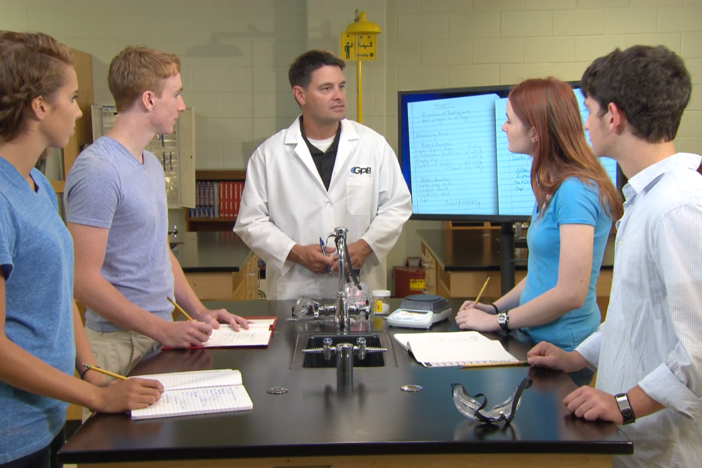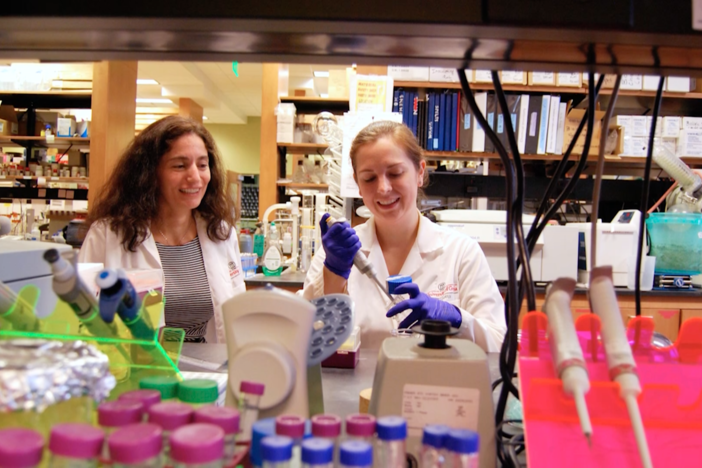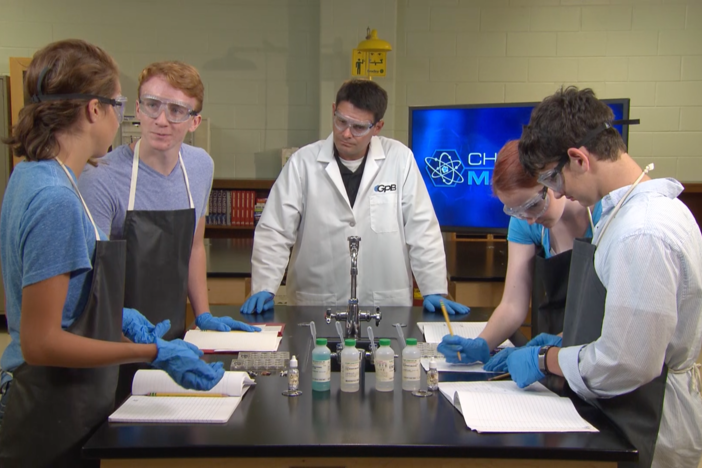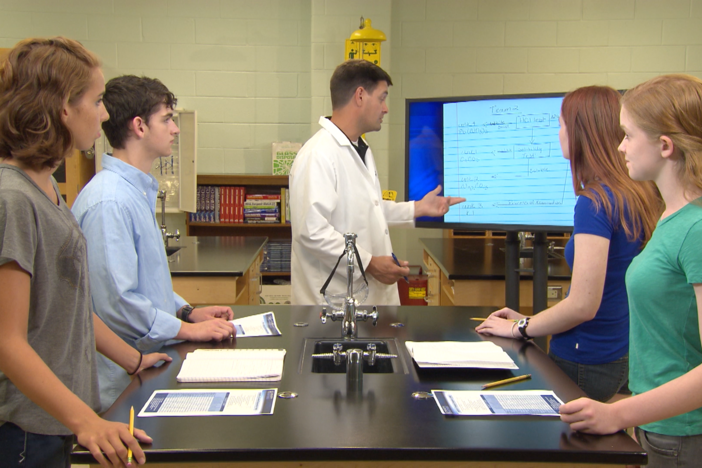Segment B: Types of Reactions
This segment explores different types of reactions by performing a lab and talking with two special guests - Dr. Eileen Kennedy, who explains how scientists use chemical reactions to synthesize new medications, and Dr. Mike Petelle, who discusses acid rain.
Segment B: Types of Reactions
This segment explores different types of reactions by performing a lab and talking with two special guests - Dr. Eileen Kennedy, who explains how scientists use chemical reactions to synthesize new medications, and Dr. Mike Petelle, who discusses acid rain.
Science
Obtain, evaluate, and communicate information about the chemical and physical properties of matter resulting from the ability of atoms to form bonds.
Develop and use bonding models to predict chemical formulas including ionic (binary and ternary), acidic, and inorganic covalent compounds.
Obtain, evaluate, and communicate information about how the Law of Conservation of Matter is used to determine chemical composition in compounds and chemical reactions.
Use mathematics and computational thinking to balance chemical reactions (i.e., synthesis, decomposition, single replacement, double replacement, and combustion) and construct an explanation for the outcome of a simple chemical reaction based on the outermost electron states of atoms, trends in the periodic table, and knowledge of the patterns of chemical properties.
Plan and carry out an investigation to determine that a new chemical has been formed by identifying indicators of a chemical reaction (e.g., precipitate formation, gas evolution, color change, water production, and changes in energy to the system).
Obtain, evaluate, and communicate information to support the Law of Conservation of Matter.
Plan and carry out investigations to generate evidence supporting the claim that mass is conserved during a chemical reaction.
activity series - a list of metals or non-metals in order of decreased reactivity.
chemical change - any change that results in the formation of a new chemical substance.
coefficient - a number in front of a chemical substance that represents the quantity needed for a reaction.
combustion reaction - a type of chemical reaction that occurs when carbon and hydrogen compounds react with oxygen to produce carbon dioxide and water.
decomposition reaction - when one reactant breaks apart into two or more products.
double displacement reaction - a type of chemical reaction that occurs when the like ions of two ionic substances displace each other to form new substances; also known as a double replacement reaction.
law of conservation of matter - matter cannot be created or destroyed, it just changes from one form to another.
matter - anything that has mass and takes up space.
physical change - a change which alters a substance without altering its composition.
precipitate - a solid substance formed in a solution during a chemical reaction.
product - a substance formed as the result of a chemical reaction.
reactant - a substance that takes part in and undergoes change during a chemical reaction.
single displacement reaction - a type of chemical reaction that occurs by the transfer of electrons, so that a neutral substance displaces a like-charged ion in a compound so that it becomes neutral; also known as a single replacement reaction.
solubility table - a table which displays the ability of a substance to dissolve or dissociate in water or an acid.
synthesis reaction - a reaction that combines two or more reactants to form one product.
The Chemistry Matters teacher toolkit provides instructions and answer keys for labs, experiments, and assignments for all 12 units of study. GPB offers the teacher toolkit at no cost to Georgia educators. Complete and submit this form to request the teacher toolkit. You only need to submit this form one time to get materials for all 12 units of study.




